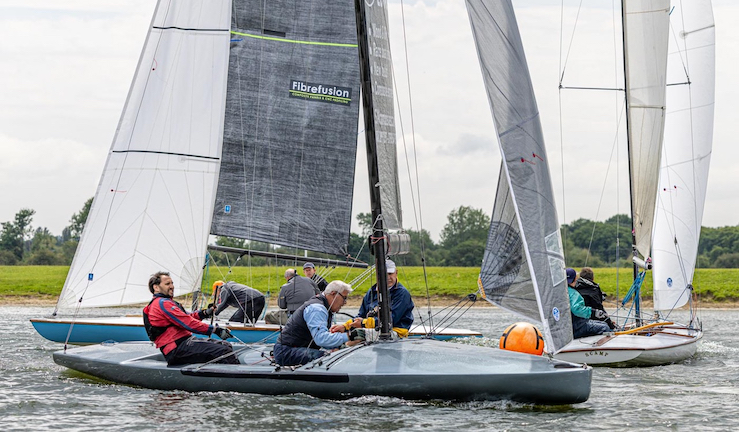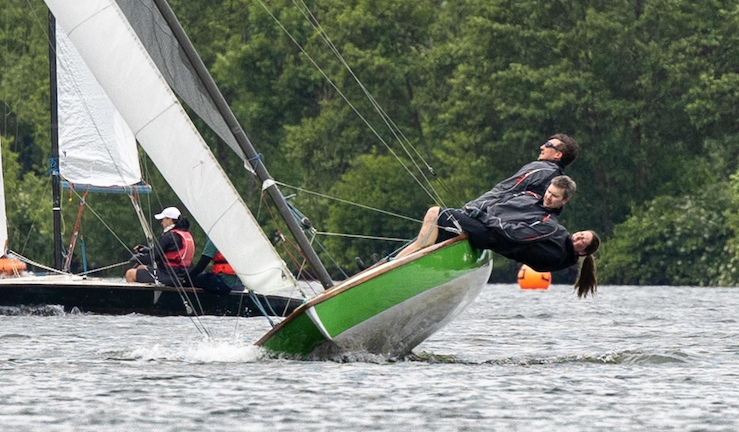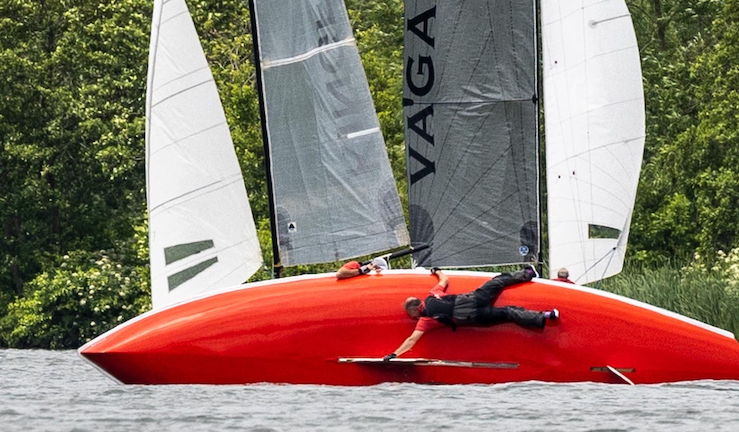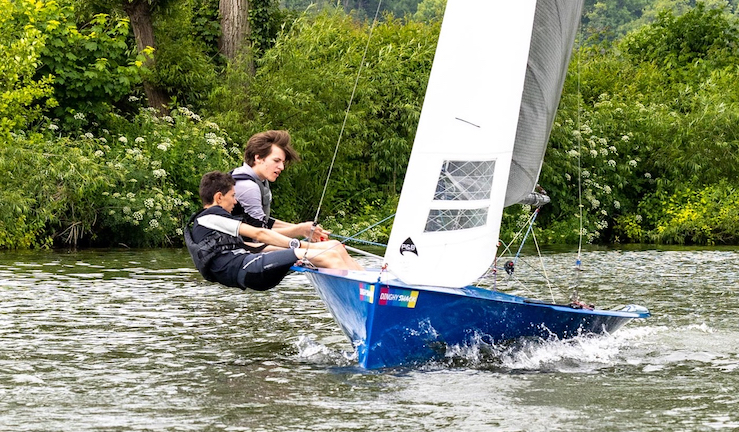Celebrating two jubilees at Upper Thames SC

Tony Ketley from the club takes up the story of this year’s event:
On Thursday, the first day, flags on the new signal gantry hung rather than flew with any purpose, and the indecisive breeze came from every compass point in the course of five minutes. It was lottery which way it would be blowing at the end of a five-minute start sequence, jackpot, we got it right. Merlins were away first, OKs next then Wayfarers and the Handicap fleet. The race officer understood the frustration of the competitors and didn’t prolong their suffering for any longer than was really necessary to run a fair race. Things improved for the afternoon’s sailing.

The Thames A Rater sailors are drawn each year to Bourne End all with the hope of taking home the most coveted trophy in Rater sailing, the Queen’s Cup, the Queen being Queen Victoria. These craft can make progress with the slightest hint of a breeze, a big relief for the race officer. Their second Raters’ race of the day way was late in the afternoon and benefitted from a little more wind.
Day 2 Friday. A light breeze from a constant direction gave cheer to the competitors and race officer alike. This was the day of the Queen’s Cup which under the rules could last up to four hours and must cover nine miles. The other classes had their races in the morning leaving enough time for the Raters. In the event the winner, Vagabond helmed by Ben Palmer with Miles Palmer and Kevin Pearson as crew, crossed the line in an hour and forty-two minutes. Osprey and Scamp took second and third places, meaning all the silverware was lifted by Thames SC members. Well done Thames.

Day 3 Saturday saw dull skies threatening rain, with wind that put waves on the water, much more exciting, there would be capsizes, and there were. This was now a spectator sport, not a day for the faint hearted.
Saturday evenings at BEW are known for the traditional cocktail party followed by dinner and a party. Local band, The Rock Doctors, hit the spot with their choice of music and kept the dance floor busy with gyrating sailors of all ages.

Day 4 Sunday. The wind had eased somewhat but was enough to play with. The skies still had the threat of rain but fortunately didn’t fulfil the promise. The sun appeared late morning and improved the mood to what could be described as a pleasant day’s sailing.

The re-established camping field, aka Sin City, was popular with visitors and members who were here for the duration. The caterers got the thumbs up; food was always very good and value for money. All in all, another successful Bourne End Week (BEW) with the promise from the visitors to return next year.
BEW has traditionally been held around the second bank holiday in May. If you haven’t been before, put in your diaries for next year and come and join the fun.
A fuller version of Tony’s report and results can be found here
Photos credit Tony Ketley.
David Frost from the club provides a history of the event:
The event was inaugurated in 1887 by Upper Thames Sailing Club (UTSC) to celebrate Queen Victoria’s Golden Jubilee.
1887 was also the year in which the Rating Rule was adopted by the Yacht Racing Association (now RYA). Apart from the war years and 2020 (Covid pandemic) BEW has been held every year since.
Until the Second World War UTSC hosted the event and a different river club organised the racing each day. The present format in which UTSC both hosts and runs the racing was adopted after the war when the Sailing Boat Association, which had run river racing since 1888, was disbanded.
Thames Sailing Club’s (TSC) contribution to the 1887 Jubilee was the Thames Champion Cup (TCC). Initially this was held at Surbiton and each river club was invited to send two boats to race. When the race was won by a UTSC boat the decision was taken to run the TCC as part of BEW. Initially it remained an inter club race but c1900 it took its present form as the trophy for the best performing Rater overall. It was the premier BEW trophy until the Queen’s Cup was given to UTSC in 1893.
Our Queen’s Cup is thought to be unique. It was the custom in the 19th and early 20th centuries for two or three Royal Cups to be awarded each year. They were given to prestigious ‘Royal’ coastal yacht clubs. Ours is the only one given to a sailing club, to an inland club and to a club without a Royal prefix. It is also the only one for perpetual, as opposed to one off, competition and its shape – a pilgrim water bottle – is unique. Other Royal cups are of a more traditional design.
The oldest surviving BEW trophy is the Ruby Salver, now owned by TSC, which was won by Ruby in 1888. In that year it was presented by the now defunct Thames and Kennet SC. It was lost for many years but about ten years ago was found in a hedge on a farm in Cornwall. Since being restored it has been awarded to the highest placed boat in the TCC which was not placed in the first three in any race.
I suspect BEW is unique insofar as we are sailing the same class now as was sailed in 1887.
UTSC is an RYA Recognised Training Centre and British Youth Sailing Recognised Club.
